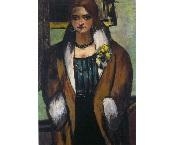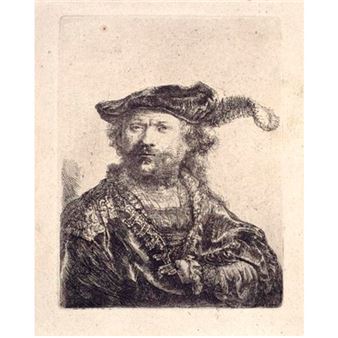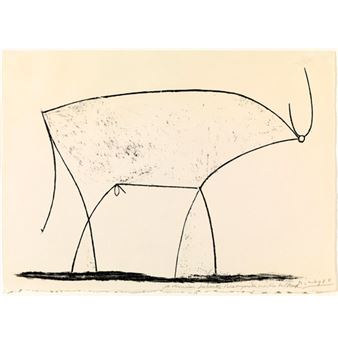Picasso: German Records
Innumerable studies and essays have been published by experts around the world on highly diverse aspects of Pablo PicassoвҖҷs work. His relationship with the land of his birth, Spain, and his adopted homeland, France, continue to appeal to many art historians. Yet the relationship between PicassoвҖҷs art and German art has not yet been examined in depth. Therefore, this exhibition at Museo Picasso MГЎlaga, curated by its artistic director, JosГ© Lebrero Stals, undoubtedly opens up an important new avenue by presenting 22 records based on the connections, affiliations and divergences between Pablo Picasso and a select group of German artists who are now considered classic modern painters, and who radically changed the direction of the history of art.
Although it cannot be said that PicassoвҖҷs influence had a specific impact in Germany, the exhibition does highlight both the interest and resistance shown towards Picasso by those German modern artists who did not choose to employ abstraction. This paradox can be seen in the way such artists took up a position and developed their own work while fully aware of the innovative contributions of the Spanish artist - mainly because of the impact of Cubism вҖ“ yet without this preventing them from seeking ways to create their own cultural idiosyncracy, thus resisting the danger of falling victim to PicassoвҖҷs aesthetic force.
PICASSO AND GERMAN ART
In bringing to an end the old aesthetic of the 19th-century, the lively new settings of cultural life in Paris and Berlin during the first half of the 20th century were the driving force behind the movement of artists and intellectuals, and the powerful flow of ideas. The exhibition takes us on a journey around 22 complementary environments. In each of them, works by Picasso are combined with works by his German contemporaries. We can also see PicassoвҖҷs interest in the 16th-century German Masters, along with graphic documents, photographs, books and other items that serve to provide a spatial and temporal context for the artworks.
The narrative of the exhibition begins in 1905, when the Die BrГјcke, (The Bridge) group was founded in Dresden and, later, Der Blaue Reiter (The Blue Rider), and Dadaism in Berlin. It ends in 1955 with the redeeming international exhibition documenta 1 in Kassel, which showcased what the Nazis had previously reviled as вҖңdegenerate artвҖқ. A total of 75 works by Pablo Picasso are on display alongside more than 100 works by artists such as Max Beckmann, Heinrich Campendonk, Otto Dix, Max Ernst, George Grosz, Erich Heckel, Hannah HГ¶ch, Wassily Kandinsky, Ernst Ludwig Kirchner, August Macke, Paula Modersohn-Becker, Otto Mueller, Emil Nolde, Max Pechstein, Franz Radziwill and Karl Schmidt-Rottluff, as well as Lucas Cranach the Younger, Lucas Cranach the Elder, and workshops on Frans Francken and Lucas Cranach the Younger.
As a consequence of the historical construct of bourgeois individualism, the subjects of this exhibition were artists with a rebellious streak, who changed the rules of art both in Germany and in Europe. PicassoвҖҷs profoundly iconoclastic gesture with Cubism clashed with the Renaissance canon of perspective and the colourist principles of Impressionism, and was in tune with the rebellious stance that he shared in diverse ways with his German contemporaries, creating pictorial alternatives to the hegemonic order that was the legacy of Romanticism in his own country, Spain. PicassoвҖҷs destructive aesthetic force stands in contrast in both conceptual and formal terms with the essential idea that inspired the German artists selected for this exhibition: the use of the figurative image to express their feeling of cultural rejection of an order they no longer respected.
DOCUMENTARY MATERIAL AND INTERNATIONAL SCOPE
The half-century covered by the exhibition-narrative of Picasso. German Records was an period of great changes when, despite the two wars, culture spread throughout Europe in an extraordinary way, thanks to techniques for the reproduction of images: engravings, xylography, lithography and, of course, photography and filmmaking, which are also included in this exhibition alongside the abundant documentary material.

Recommended for you
Innumerable studies and essays have been published by experts around the world on highly diverse aspects of Pablo PicassoвҖҷs work. His relationship with the land of his birth, Spain, and his adopted homeland, France, continue to appeal to many art historians. Yet the relationship between PicassoвҖҷs art and German art has not yet been examined in depth. Therefore, this exhibition at Museo Picasso MГЎlaga, curated by its artistic director, JosГ© Lebrero Stals, undoubtedly opens up an important new avenue by presenting 22 records based on the connections, affiliations and divergences between Pablo Picasso and a select group of German artists who are now considered classic modern painters, and who radically changed the direction of the history of art.
Although it cannot be said that PicassoвҖҷs influence had a specific impact in Germany, the exhibition does highlight both the interest and resistance shown towards Picasso by those German modern artists who did not choose to employ abstraction. This paradox can be seen in the way such artists took up a position and developed their own work while fully aware of the innovative contributions of the Spanish artist - mainly because of the impact of Cubism вҖ“ yet without this preventing them from seeking ways to create their own cultural idiosyncracy, thus resisting the danger of falling victim to PicassoвҖҷs aesthetic force.
PICASSO AND GERMAN ART
In bringing to an end the old aesthetic of the 19th-century, the lively new settings of cultural life in Paris and Berlin during the first half of the 20th century were the driving force behind the movement of artists and intellectuals, and the powerful flow of ideas. The exhibition takes us on a journey around 22 complementary environments. In each of them, works by Picasso are combined with works by his German contemporaries. We can also see PicassoвҖҷs interest in the 16th-century German Masters, along with graphic documents, photographs, books and other items that serve to provide a spatial and temporal context for the artworks.
The narrative of the exhibition begins in 1905, when the Die BrГјcke, (The Bridge) group was founded in Dresden and, later, Der Blaue Reiter (The Blue Rider), and Dadaism in Berlin. It ends in 1955 with the redeeming international exhibition documenta 1 in Kassel, which showcased what the Nazis had previously reviled as вҖңdegenerate artвҖқ. A total of 75 works by Pablo Picasso are on display alongside more than 100 works by artists such as Max Beckmann, Heinrich Campendonk, Otto Dix, Max Ernst, George Grosz, Erich Heckel, Hannah HГ¶ch, Wassily Kandinsky, Ernst Ludwig Kirchner, August Macke, Paula Modersohn-Becker, Otto Mueller, Emil Nolde, Max Pechstein, Franz Radziwill and Karl Schmidt-Rottluff, as well as Lucas Cranach the Younger, Lucas Cranach the Elder, and workshops on Frans Francken and Lucas Cranach the Younger.
As a consequence of the historical construct of bourgeois individualism, the subjects of this exhibition were artists with a rebellious streak, who changed the rules of art both in Germany and in Europe. PicassoвҖҷs profoundly iconoclastic gesture with Cubism clashed with the Renaissance canon of perspective and the colourist principles of Impressionism, and was in tune with the rebellious stance that he shared in diverse ways with his German contemporaries, creating pictorial alternatives to the hegemonic order that was the legacy of Romanticism in his own country, Spain. PicassoвҖҷs destructive aesthetic force stands in contrast in both conceptual and formal terms with the essential idea that inspired the German artists selected for this exhibition: the use of the figurative image to express their feeling of cultural rejection of an order they no longer respected.
DOCUMENTARY MATERIAL AND INTERNATIONAL SCOPE
The half-century covered by the exhibition-narrative of Picasso. German Records was an period of great changes when, despite the two wars, culture spread throughout Europe in an extraordinary way, thanks to techniques for the reproduction of images: engravings, xylography, lithography and, of course, photography and filmmaking, which are also included in this exhibition alongside the abundant documentary material.
Artists on show
- August Macke
- Emil Nolde
- Erich Heckel
- Ernst Ludwig Kirchner
- Franz Radziwill
- George Grosz
- Hannah Höch
- Heinrich Campendonk
- Karl Schmidt-Rottluff
- Lucas Cranach the Elder
- Lucas Cranach the Younger
- Max Beckmann
- Max Ernst
- Max Pechstein
- Otto Dix
- Otto Müller
- Pablo Picasso
- Paula Modersohn-Becker
- Wassily Kandinsky
Contact details


 ARTISTS
ARTISTS














